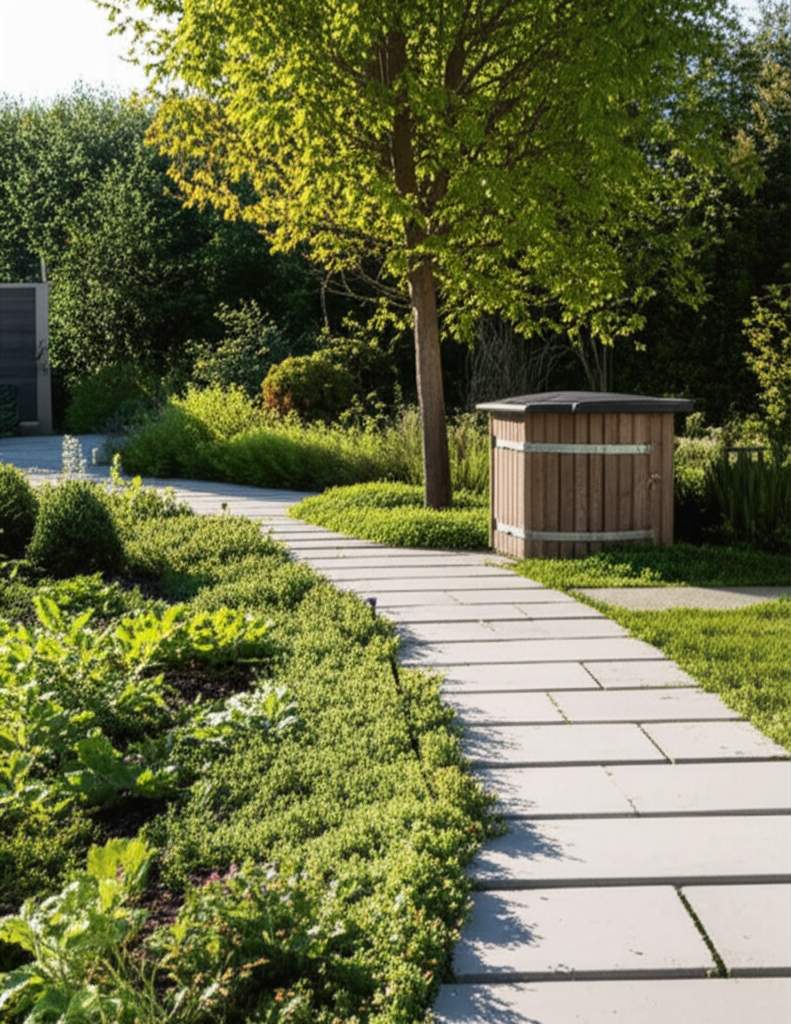Small Shifts to Make Your Yard a Carbon-Capturing Powerhouse
Imagine a yard that not only looks beautiful but also works tirelessly to combat climate change. Carbon-negative landscaping turns this vision into reality by designing outdoor spaces that store more carbon than they release. This approach transforms ordinary gardens into vital allies for the planet, and the best part is that even minor adjustments can yield significant results. Whether you have a sprawling lawn or a modest patio, small, intentional changes can create a lasting impact.
Understanding Carbon-Negative Landscaping
At its core, carbon-negative landscaping focuses on maximizing carbon storage through plants, soil, and sustainable materials. Unlike traditional yards that may emit carbon through maintenance or material use, this method prioritizes practices that draw carbon from the atmosphere and lock it away. It is a practical way to contribute to environmental health, no matter the size of your space. From a single tree to a patch of native flowers, every element plays a role in this quiet, powerful process.
Core Principles for a Carbon-Friendly Yard
Building a carbon-negative landscape does not require a complete overhaul. Instead, it relies on a few foundational ideas that guide your choices and amplify your yard's potential.
- Prioritize Plants Over Lawns: Traditional grass lawns offer minimal carbon storage compared to diverse plantings. Shrinking lawn areas and adding trees, shrubs, or perennials boosts carbon capture while enriching soil life.
- Select Strategic Plants: Trees stand out as carbon storage champions, especially when chosen for your local climate. Native species also excel, with deep roots that sequester carbon and require less upkeep.
- Nurture Soil Health: Soil acts as a carbon reservoir when managed well. Adding compost from kitchen waste, using organic mulch, or leaving fallen leaves in place helps trap carbon and fosters a thriving underground ecosystem.
- Opt for Sustainable Materials: Hardscaping choices matter. Permeable pavers or reclaimed wood for paths and patios minimize emissions and allow soil to remain active, unlike carbon-intensive concrete.
Natural Versus Formal Designs
A naturalistic yard, with wildflower meadows and organic layouts, often captures more carbon due to its diversity and soil depth. However, a formal garden with structured beds and clean lines can achieve similar results with deliberate planning. Incorporate carbon-storing trees, use eco-friendly materials, and focus on soil-building techniques to ensure any style aligns with carbon-negative goals. The key lies in balancing aesthetics with environmental purpose.
Begin With Manageable Changes
Transforming your yard might seem daunting, but starting small makes it approachable. Focus on one corner: replace a lawn patch with a bed of native plants that attract pollinators. Plant a young tree in a sunny spot, ensuring it has room to mature. Set up a compact compost bin for food scraps to enrich your soil naturally. These initial steps build momentum and reveal what thrives in your unique space.
Multiply Impact Through Consistency
Repetition creates harmony in design and amplifies carbon storage. A single compost pile helps, but applying soil-building practices across multiple areas increases benefits. Planting one tree is valuable, yet establishing a row along a fence line enhances both visual appeal and carbon capture. Consistent, thoughtful actions compound over time, turning small efforts into substantial gains.
Benefits Beyond Carbon Storage
A carbon-negative yard offers rewards that extend far beyond environmental impact. These spaces often teem with life, providing habitat for birds, bees, and beneficial insects. Maintenance demands typically decrease as natural systems find balance, saving time and resources. Perhaps most fulfilling is the personal satisfaction of knowing your garden contributes to a healthier planet while serving as a peaceful retreat.
Actionable Steps to Get Started
Ready to turn your yard into a carbon-capturing haven? Begin with these practical, achievable actions tailored to fit any space or budget.
- Survey your yard to identify areas where lawn can transition to diverse plant beds.
- Choose and plant a tree suited to your region, positioning it for optimal growth.
- Initiate a simple composting system to recycle organic waste into soil enrichment.
- Apply natural mulch, such as wood chips or straw, to retain moisture and store carbon.
- When installing paths or patios, select permeable or salvaged materials to reduce environmental footprint.
Each step stands alone as a meaningful change, yet together, they weave a landscape that actively sequesters carbon and supports sustainability.
A Lasting Legacy in Your Landscape
Landscaping transcends mere decoration; it reflects how we interact with the earth and the legacy we leave behind. A carbon-negative yard serves as both a personal sanctuary and a quiet contribution to global well-being. Through mindful planting, dedicated soil care, and sustainable choices, any homeowner can reshape their outdoor space into a force for positive change. Start small, stay consistent, and watch your garden grow into a powerful tool for planetary health.
